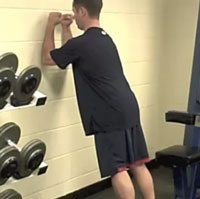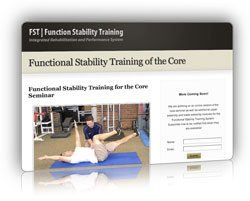
As with many core exercises, I often see this exercise performed poorly. What tends to happen is that people try to advance to this pretty challenging exercise way too early and before they can properly stabilize. The results is a poorly performed exercise that actually reinforces poor compensatory movements. This trend in getting too advanced with core training before your patient or client is ready is something I discussed in length in my new program with Eric Cressey, Functional Stability Training of the Core.
Rotary Stability Plank
The rotary stability plank is the exercise I start to use first when I want to progress the standard plank exercises to incorporate a rotary component.
Most athletic people will need to enhance their rotary stability. If you are a FMS fan, this is a great way to enhance rotary stability to improve your scores. This exercise is also the first I will perform before integrating more advanced rotary core exercises such as med ball throws, chops, and lifts. If they can’t do this, they have no business performing more advanced exercises.
How to Perform the Rotary Stability Plank
Here are some simple instructions to get you started:
- Begin by facing a wall with your feet shoulder width apart. The distance you are away from the wall will increase the challenge, so start closer to the wall and progress back as you master the exercise
- Assume a standard fron plank position with you forearms on the wall in front of you. I usually try to have my shoulders fairly perpendicular to the wall, so my hands are pretty close to eye level.
- Begin by performing a standard plank, keeping your body in line. Try to avoid flexing at your hips or hyperextending your spine. You are trying to be in neutral spine.
- After a few seconds of stabilizing a standard front plank, slowly raise one forearm off the wall without allowing your body to rotate or your hips to hike. You only need to take your weight off the wall on that side, it isn’t a big movement.
- The goal is to keep your body stable while avoiding rotation.
Notice that I start this exercise on the wall. This reduces the difficulty and gravitational component of the drill. The focus should be on performing the exercise well, and then progressing to more challenging positions like standing leaning on a table edge or on the ground.
[box]If you remember one thing from our Functional Stability Training of the Core program, it is simply that movement quality is by far the most important component of core training.[/box]
For more information on our Functional Stability Training of the Core program, check out FunctionalStability.com.





